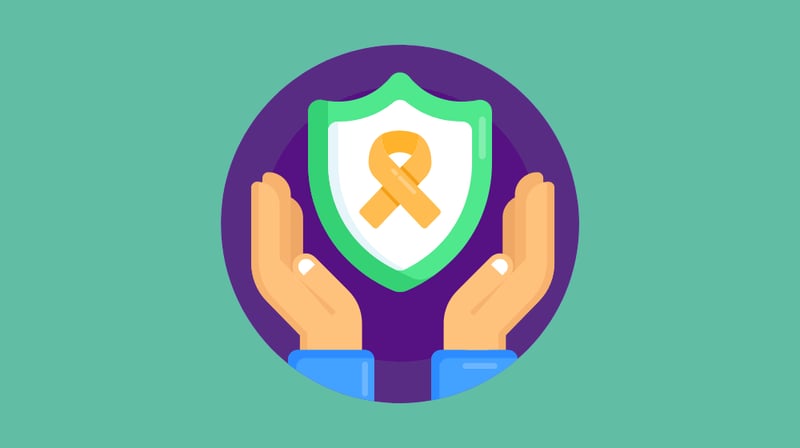June is Men’s Health Month.
Our campuses may be quieter in June, with fewer students around and without the robust programming of an academic year, but Men’s Health Month is an ideal time to consider better approaches to engage college men.
Among the men’s health statistics on Montana State’s Counseling Center website is this: 75% of college deaths are male.
The same website shares, “Men can improve their health and reduce the risk of accident, illness, injury, and death by reducing high risk activities, using safety gear, going to the doctor, and engaging in preventive practices.” Of course, this is correct.
Yet, therein lies the challenge — and the question. How can we increase the motivation of college men to do these things? Especially when, “factors that influence college men’s behavior include gender stereotypes which influence men’s ideas of masculinity, a need to conceal vulnerability, a relative lack of health knowledge, failure to adopt health-promoting behavior, and willingness to take unnecessary risks.”
Some institutions are speaking directly to this population.
The College of William and Mary offers dedicated Men’s Health services, such as a Men’s Health Clinic and a Men’s Health Course on their website. Vassar’s efforts include a Men’s Health Committee, open for participation or submission of questions/concerns. The Center for Health Promotion at Ithaca College features 10 resources for Men’s Health, a simple addition to any wellness website.
Although the scope of men’s health is broad and complex, one aspect of it keeps coming to the surface: Men’s mental health. After all, mental health is health. So, if we’re talking about men’s health, we must be talking about their mental health. But…are we actually?
We brought awareness and discussion on this topic in May with Mental Health Month. Are we talking about mental health as part of men’s health in June?
Are we doing it throughout the academic year?
We need to be.
Men’s Health is pretty direct about this: “Not Talking About Mental Health is Killing Men.” Given that 75% of all mental health conditions begin by age 24, we ought to be paying attention. As men account for 6 out of 10 college-aged suicides and are about 4 times more likely to complete suicides than women, we should know:
What are their barriers to support? What are possible solutions?
In an article published in the American Journal of Men’s Health, a study found the seven key themes of barriers to professional help-seeking behavior in young men to be as follows: acceptance from peers, personal challenges, cultural and environmental influences, self-medicating with alcohol, perspectives around seeking professional help, fear of homophobic responses, and traditional masculine ideals.
Racial and ethnic considerations here should not be ignored. “Social perfectionism” is one global view on why men commit suicide at such high rates. The psychological distress and isolation of discrimination and related experiences are considerations in minority populations. We also have to appreciate the unique experiences of the LGBT community, who are 2.5 times more likely to experience depression, anxiety, and substance misuse, and 3 times more likely to experience a mental health condition.
We have a place to start, however, on how to make a positive impact: The study found that five key themes of solutions to the barriers included tailored mental health advertising, integrating mental health into formal education, education through semi-formal support services, accessible mental health care, and making new meaning.
Tailored Advertising
As noted, definitions and perceptions of masculinity can inform how men approach their health. It may influence if/how men seek help, talk about health issues, and engage in self-care. Thus, broad yet defined efforts on masculinity could certainly be a framework from which to better address men’s mental health on college campuses, and an effective means of exploring what’s at the root of related issues.
Tailoring your content is also a great way to include the perspective and experiences of marginalized groups in the conversation. In addition to the built-in “tailored mental health advertising” it allows, masculinity initiatives encourage the “making new meaning” through discussion and teamwork.
If you’re looking for a good clearinghouse with an on-going conversation on masculinity, NASPA hosts a Men & Masculinities Knowledge Community worth exploring. There are masculinity programs to look to as well, such as Stony Brook University’s Center for the Study of Men and Masculinities. Other examples include Men & Masculinities Programming from KU, the MASCulinities Initiatives out of Arizona, and Men and Masculinity from Cal Poly.
These efforts cast a wide net with an informal approach on important matters: Issues related to masculinity (and men’s mental health) can include loneliness, managing feelings like anger or sadness, and cultivating quality relationships. (Mark Greene shares in “Why Men’s Friendships Can Feel So EMPTY” that, “Men, relying on emotionally risk-free friendships of proximity, are facing a lifetime of social isolation.”)
In terms of other outreach programs with a tailored approach, we have great examples to reference, as men talking about mental health is becoming more mainstream.
Heads Together has the leadership of Princes William and Harry and shines a light on men’s mental health, including special populations like the military. Accessible, tailored, semi-formal, and making new meaning, this successful program is about mental health in a way that fits for men. Other programs are on the way: The NBA recently announced the start of a new mental wellness program for its players.
Speaking of the NBA, athletes and other well-known men are starting to speak up about mental health, and it may be the most powerful solution of all. Actors Ryan Reynolds and Dwayne “The Rock” Johnson, and NBA’s stars Kevin Love and DeMar DeRozan have all shared their stories recently. Also, since 1 in 3 people struggling with an eating disorder is male but this mental health issue rarely talked about among men, having MLB player Mike Marjama and Olympic champion Adam Rippon openly share their stories can be meaningful.
Integrating Mental Health
“Integrating mental health into formal education” means that it is a part of the educational environment. In addition to it becoming a part of academic curricula as appropriate (innovation is needed here as well), mental health information is generally available.
For example, counseling center and other wellness department information is consistently advertised. Students are aware where services are located, how the process works, and perhaps know answers to common FAQs about these resources.
The more well-integrated it may be, the more it may contribute to destigmatizing help-seeking behavior.
Health promotion skills are essential in making this integration a success, as well as a campus commitment for areas to promote resources in a variety of discussions and opportunities. Campus culture plays a role too, such as how bullying, harassment, and other incidents are handled, particularly regarding the acknowledgment of the impacts of such behavior on mental health.
Semi-Formal Support
“Education through semi-formal support services” refers not only to a “supportive informal environment” but an effective (yet informal) relationship with a person who is generally there for support and becomes someone a college male may, in time, feel he can turn to for help.
On our college campuses, these could be a variety of people: Student organization advisors, academic advisors, mentors, front desk staff, and more. Indeed, any consistent relationship throughout that student’s academic year has the capacity to provide education through semi-formal support services.
Ways to increase the quality and quantity of this kind of student engagement is to create more opportunities for contact as well as an increased understanding among staff on how college men may seek out additional support and deal with mental health.
Speaking to almost all five of the themed solutions offered by the study in Men’s Health, research out of Australia shows men will seek help if tailored to their needs. Some institutions are finding success in reaching college men by doing just that.
Approaching counseling through the lens of problem-solving, strength-building, group activities, or informal connection has helped several universities reach more male students. At Ohio State University, for example, the number of male clients had increased 16% with this change.
These adaptations to engage college men may be critical: If they become more willing to try counseling, continue the service, or speak positively about it to their peers, help-seeking may become more de-stigmatized over time in this population.
Accessible Care
“Accessible mental health care” for college men relates to it being easy to access, both physically and emotionally. In other words: Finding ways to get the info in front of them regularly is important, as they likely will not seek it out themselves, even if they are in need.
Having mental health care be emotionally accessible means continuing to encourage help-seeking behavior and to create a supportive, familiar environment so it eventually feels safe and easy to connect. “Young men want to deal with their problems in an environment that provides some choice, control, and where there are equal power relations.”
Making New Meaning
We don’t always have to lead the conversation talking about “mental health” to reach men on this topic, however. Be creative and go through the side door.
For example, you can support “making new meaning” by encouraging college men to challenge their idea of fitness and strength by trying new things like yoga, meditation, or mindfulness. Benefits of these practices for men have been featured in The Good Men Project, Mindful, and Men’s Journal — be strategic and “tailor mental health advertising” for college men using this information. Talk about yoga, meditation, or mindfulness as powerful stress management tools, tricks for better focus, a way to switch gears (compartmentalize), or a path to increased confidence, and you may have an attentive and curious audience.
How does your campus tailor mental health advertising to men, reach them with semi-formal support services, or help college men make new meaning? Have any tips to make mental health feel more accessible to college men or how to integrate it into the campus environment? Let us know!





